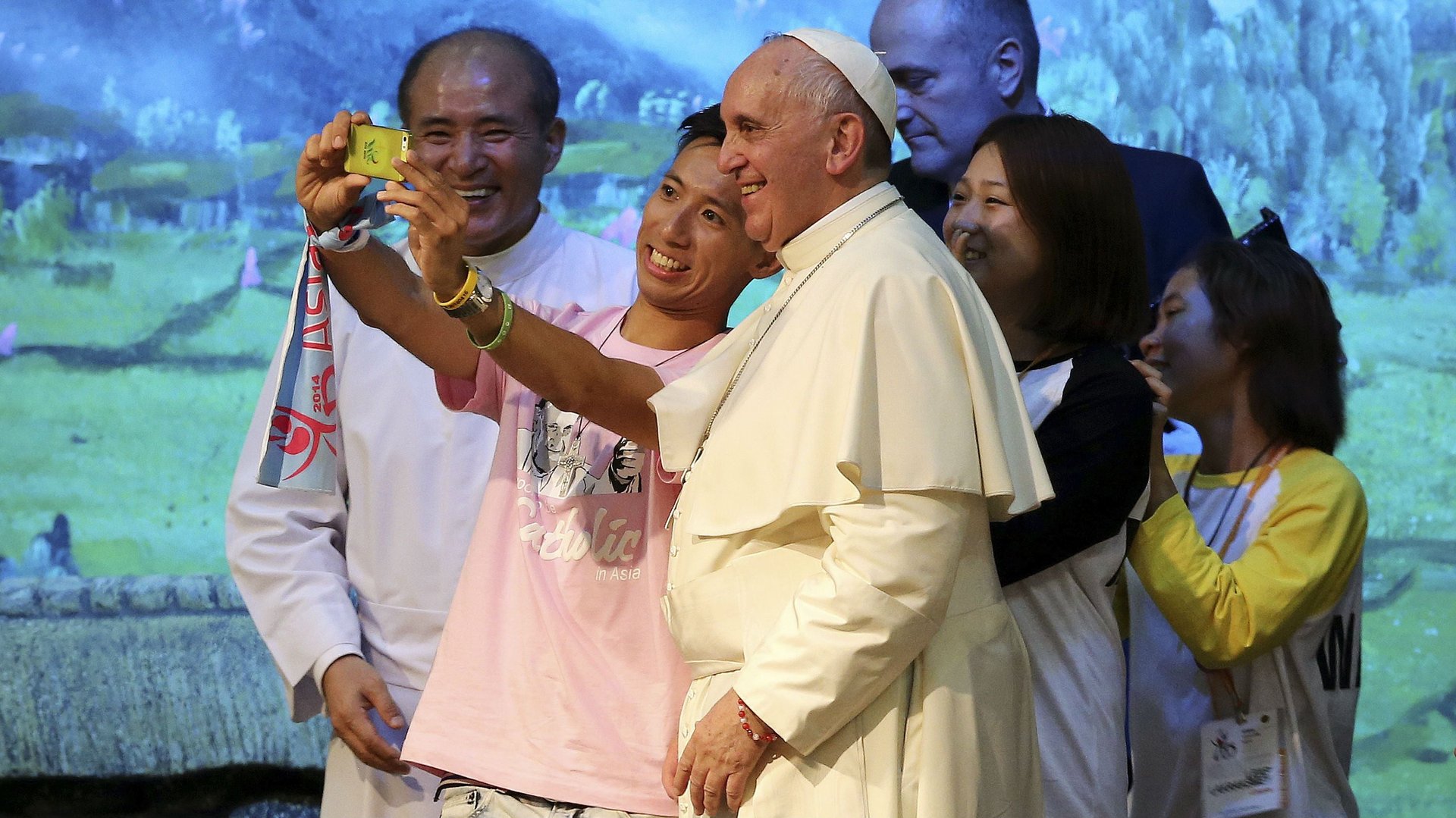2014 was the most progressive year for the Catholic Church
Pope Francis initiated a revolution in the Catholic Church in 2014—a revolution of common sense rather than ideology or doctrine.


Pope Francis initiated a revolution in the Catholic Church in 2014—a revolution of common sense rather than ideology or doctrine.
The new tone he is trying to achieve is a lucid response to the concerns that have chased many people, especially the young, away from the Catholic Church. The logic seems clear:
- Church leaders’ chilly public use of the term “disordered” for homosexuality has been replaced by the pope’s call for the church to help families better accept their gay and lesbian children—following on his famous remark, “Who am I to judge?”
- With strong evidence that people are turned off if religious leaders come across as partisan, the pope has avoided the US bishops’ focus on fighting gay marriage and abortion and instead encouraged a broader agenda by emphasizing inequality, which, as he tweeted, “is the root of social evil.”
- The carte blanche for bishops to abuse their authority was revoked as prelates such as Germany’s “bishop of bling,” Franz-Peter Tebartz-van Elst, were removed from power, with the promise of more to come as Francis deals further with the clergy sexual abuse scandal.
- After leaks, paranoia and corruption allegations swirled through the Vatican, Pope Francis has cleaned up the Vatican Bank, assailed clericalism, shamed other prelates with his simple lifestyle and taken unprecedented steps toward creating transparency by participating in a string of revealing media interviews.
These are all common-sense steps to address problems that have driven many Catholics away from the church, especially in Europe and the US—where lapsed Catholics would comprise the second largest “denomination” after the Catholic Church itself. Likewise, his focus on poverty and his effort to downplay “small-minded rules” in favor of the central Christian message—“Jesus Christ has saved you”—speaks especially to Latin America, where many Catholics have switched to Protestant worship.
But as Will Rogers famously said, “Common sense ain’t common,” and Francis’s open-armed approach has been labeled the source of “confusion” by some “orthodox” Catholics. In a widely discussed New York Times column, Ross Douthat warned that the church could be headed for a schism if its more welcoming attitude leads it to accept divorce.
The pope’s response to such fears was typically simple and down to earth. “It’s healthy to get things out into the open,” he said in an interview with the Argentine newspaper La Nacion. “It’s very healthy.” In the same interview, he is also open about the fact that his program is meeting resistance within the Roman Curia. “I am not worried. It all seems normal to me. If there were no difference of opinions, that wouldn’t be normal.”
The idea that vigorous public debate is the norm in the Catholic Church may seem revolutionary but sharp disputes were also part of the church’s 1960s Second Vatican Council. Indeed, the core of Francis’s approach—his emphasis on God’s mercy rather than on doctrine and canon law—comes straight from that council.
At the opening of that council in 1962, Pope John XXIII told the assembled bishops that the church should proceed by:
making use of the medicine of mercy rather than severity … and by showing herself to be the loving mother of all, benign, patient, full of mercy and goodness.
As Reverend John W. O’Malley of Georgetown University wrote in What Happened at Vatican II, the council’s outcome was that:
the fathers chose to praise the positive aspects of Catholicism and establish the church’s identity on that basis rather than by making Catholicism look good by making others look bad.
Francis has been doing the same. Like Pope John Paul II and Pope Benedict XVI, he can be a strong critic of society. But thanks to a series of dramatic gestures, the message that dominates is not condemnation but, as he said in an interview with La Civiltà Cattolica and other Jesuit journals including America magazine, that “the ministers of the church must be ministers of mercy above all.”
He has not changed any of the Catholic Church’s teachings. He has urged a more compassionate, inclusive approach to Catholics who divorced and remarried, not an acceptance of divorce. He has sought to make the church more accepting of gay people, but in no way changed the teaching that homosexual acts are wrong.
Some argue that we are only seeing a change in style from Francis’s predecessors, and nothing more. But that misses the point.
“Style is 80% of what we do,” Massimo Faggioli, a theologian at the University of St. Thomas in Minneapolis and author of the upcoming book Pope Francis: Tradition in Transition, told Quartz. “It’s true that the pope hasn’t changed the Catechism. He hasn’t changed the fundamental texts. But what he’s saying is really something new.”
Faggioli referred to the pope’s decision to baptize children of unwed couples. “That’s new. It’s impossible to say that’s just style,” he said. “It’s style but it conveys a very powerful message. This is the art of his genius.”
Sister Camille D’Arienzo, a former president of the Leadership Conference of Women’s Religious and a radio commentator in New York, has noticed the “Francis effect.”
“Personally it has made it easier to me to convince some of my Catholic friends who are no longer practicing,” she said. “It’s easier for me to convince them of the presence of not only a forgiving God but a forgiving church.”
That’s exactly what Francis’s revolution of common sense is aiming for.